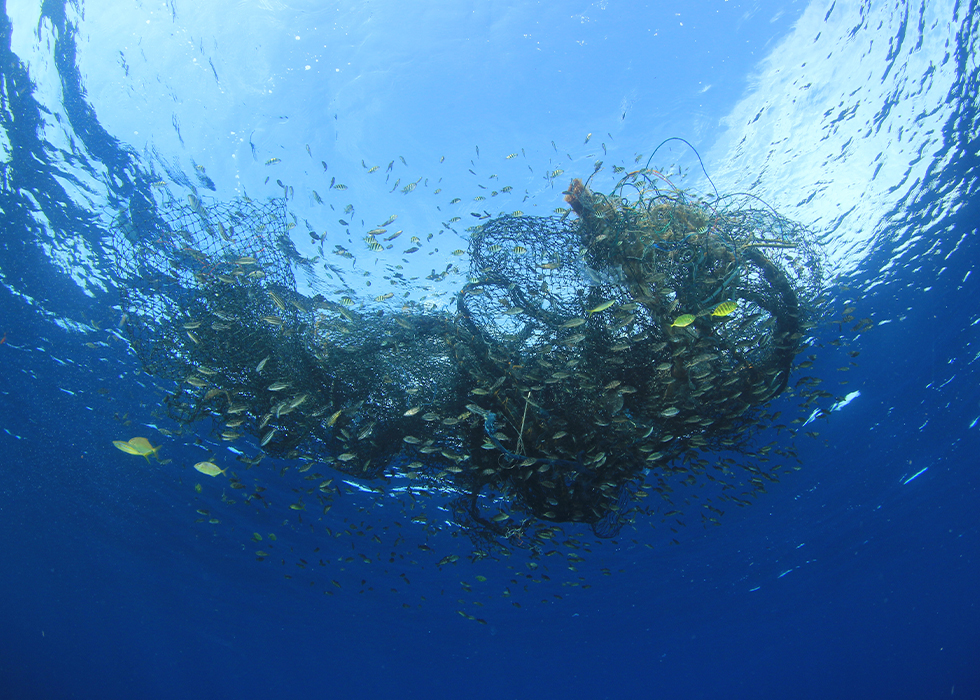Greener Seas for the Blue Planet: Exploring Sustainable Marine Solutions

Our oceans hold a vital place in our world. Spanning over 70% of the Earth’s surface, oceans and seas are not only a source of wonder, they also provide sustenance for many, with more than 3 billion people relying on oceans for their livelihoods. They are a hub for a wide range of sectors including tourism, fisheries, and international shipping and are increasingly identified as prime locations for renewable energy generation sites. As much as 90% of world trade is transacted through ocean routes, making maritime shipping the backbone of the global economy. However, many shipping vessels are still powered by fossil fuels. Challenges in developing viable alternative solutions plus the high costs associated with implementation mean it’s not all smooth sailing on the course to reach net-zero global greenhouse emissions targets.
With its recent launch of Hanwha Ocean, a global leader in shipbuilding and marine energy solutions, Hanwha is laying the foundation to create positive change in this industry. While the scope of this new venture is vast, covering activities from developing eco-friendly ships to digital technology integration, pioneering sustainable solutions that can pave the path to net zero remains one of Hanwha’s core priorities. But what will it take to see a sustainable marine sector to fruition? In this feature, Hanwha Newsroom will explore the technologies and innovations that are not only helping to decarbonize this industry, but also expanding the reach of renewable energy and driving progress towards a healthier planet for all.
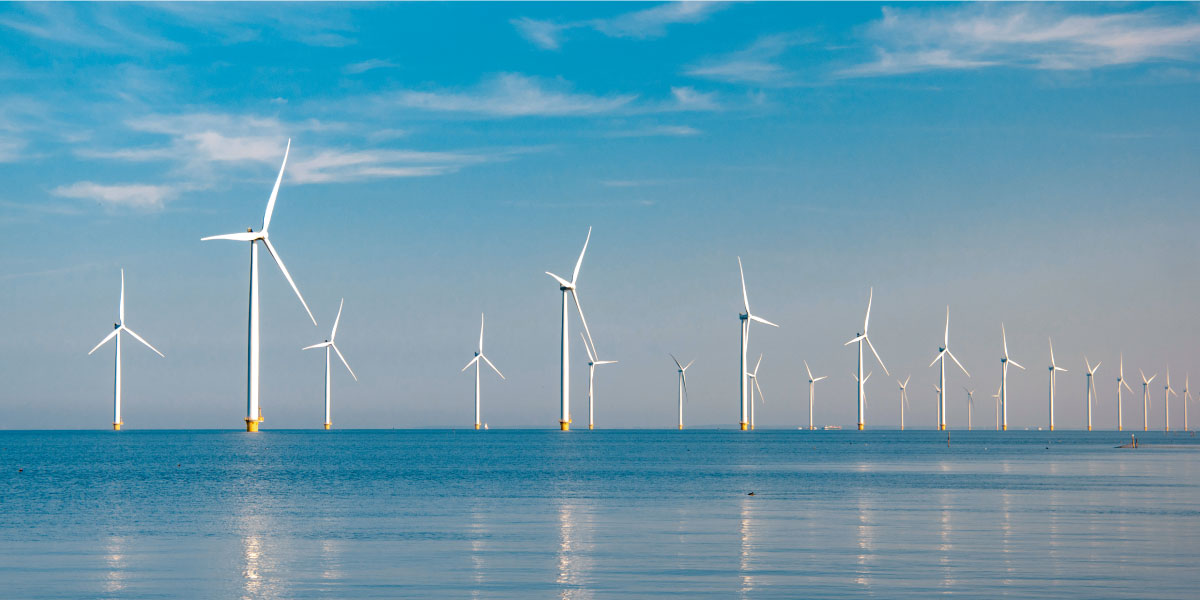
What Is a Blue Economy?
Oceans are powerful climate activists. They provide most of the oxygen we breathe and possess the unique ability to absorb around a quarter of the world’s annual carbon dioxide (CO2) emissions, further underlining their critical role in helping society achieve net-zero emissions goals and mitigating the impacts of climate change. They also create pathways between countries and industries. The marine sector can then utilize these pathways to connect people around the globe with access to goods, resources, and energy via renewable hydropower from its tides, waves and currents and floating solar power plants. Many coastal areas also provide an ideal environment for offshore wind sites thanks to their abundant, strong, and consistent wind resources. As such, offshore wind and wind turbine installation vessels (WTIV) represent a cornerstone of future growth in green energy infrastructure and the blue economy.
Expanding our presence in the ocean calls for increased efforts to prioritize its protection. The United Nations’ (UN) Sustainable Development Goal (SDG) 14: Life Below Water recognizes the importance of ocean conservation, calling for international cooperation in the sustainable use of oceans, seas, and marine resources. To achieve this goal, we must adopt a blue economy — a range of activities related to the sustainable use of ocean, sea, and coastal area resources for economic growth, improved livelihoods and jobs, and ocean ecosystem health. A blue economy seeks to answer the question, “How can we stop climate change while preventing economic harm?”
As the use of seas, oceans, and coastal areas continues to rise, so does their potential for economic growth, employment, and innovation. Accordingly, a blue economy opens a world of possibilities, especially for green energy and shipping solutions. With a blue economy as an anchor, sustainable progress towards net zero is not only possible, but profitable for both people and the planet.
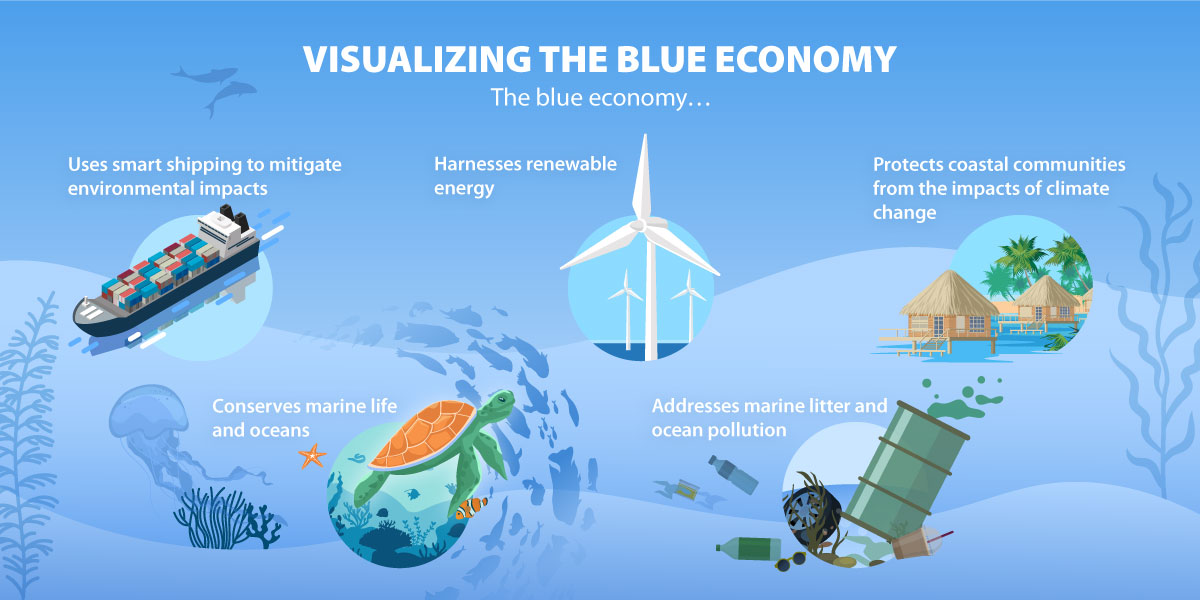
Green Shipping: Sustainable Solutions for the Maritime Industry
We’ve come a long way since the times of row boats and wind-powered sailing vessels. Today, international ocean-based trade looks more like digitized systems and ultra large cargo ships capable of hauling nearly 24,000 20-feet equivalent (TEU) shipping containers. While these advances in shipping practices have led to exponential growth in the industry and widespread globalization, they have also had environmental and societal impacts. The sector presents challenges for air and water quality and is currently responsible for 3% of global greenhouse gas emissions. Accordingly, the very present need to reform this sector has inspired a new era of green shipping initiatives.
To speed up the green shipping shift, many countries are making commitments and implementing practices geared towards sustainable and efficient shipping. For example, the U.S. and Norway have joined hands on the Green Shipping Challenge announced at COP27. This challenge encourages governments, ports, and companies to prepare commitments that spur the green shipping transition. Norway has also taken on the task of adopting a climate-neutral shipping fleet by 2050, and more than 200 organizations from the maritime sector signed the Call to Action for Shipping Decarbonization initiated by the World Economic Forum (WEF)’s Getting to Zero Coalition in 2021.
In addition to public and private sector commitments, green shipping technologies play a pivotal role in decarbonizing the maritime shipping sector. These innovations address a range of challenges from energy sources to fuel efficiency. Thanks to technological advances, solar cells and battery systems can now be integrated into a ship’s power systems, helping to drastically reduce carbon dioxide emissions. However, this is just the tip of the smart-solutions iceberg. Here’s a look at some noteworthy interventions that show great promise in decarbonizing the shipping sector and advancing progress towards net zero.
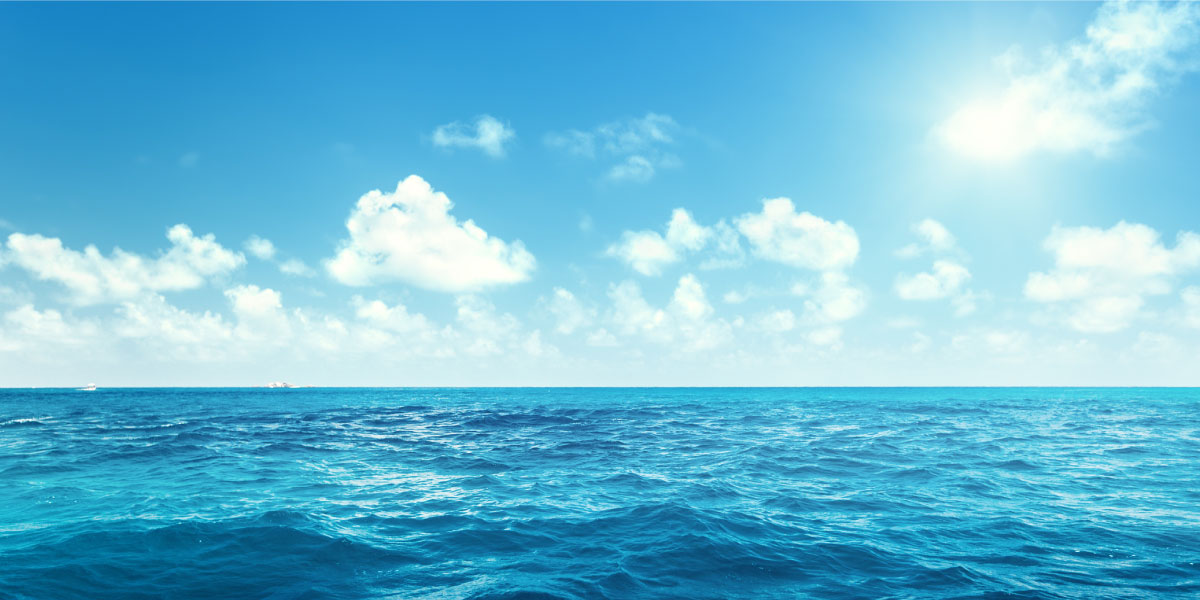
Hydrogen-based Fuels
In recent years, hydrogen has emerged as a promising energy source due to its ability to emit only water as a byproduct when consumed in a fuel cell. Green hydrogen can be produced using renewable power such as wind and solar, making it an attractive fuel option for transportation. But what is hydrogen’s role in green shipping? When produced through renewable energy resources, hydrogen offers the potential to replace traditional fossil fuels and power shipping vessels while emitting zero greenhouse gases. It is also relatively easy to retrofit existing ships with hydrogen fuel cells. Accordingly, hydrogen-based fuels are set to be the backbone of the sector’s decarbonization efforts in medium and long-term scenarios. Additional key technologies, such as ammonia, also play a role in decarbonization efforts. Though currently in development stages, ammonia shows potential as a long-term fuel that could offer low- or zero-carbon solutions.
Green Shipping Corridors
Green shipping corridors are specific trade routes between major port hubs where zero-emissions solutions, such as zero-carbon emissions ships and other emissions reductions programs, have been deployed. These corridors create special economic zones at sea that support new technologies, clean fuels, and innovative business models, enabling the opportunity to scale sustainable shipping advances into industry-wide solutions. Recently, they have gained widespread attention thanks to government support from multiple countries, including the U.S., South Korea, Canada, and the United Kingdom, who have all announced international collaboration efforts aimed at creating green shipping corridors throughout the world. Building out these routes poses complex challenges and requires strong policy, but momentum is growing. Data suggests that feasible, high-impact opportunities for green corridors are present, and could further generate action towards a decarbonized maritime shipping sector.
Biofuels
What are biofuels? According to academic research, biofuels can be considered the most “technologically ready” of existing alternative zero emission fuel options. The most commonly used biofuels are currently available in the form of drop-in fuels, or fuels with the possibility to replace petroleum-refined hydrocarbons without substantial engine modification, including hydrotreated vegetable oil (HVO). Because of their ability to enter the market relatively quickly, biofuels can potentially be offered as both medium- and long-term fuel alternatives. The current use of biofuels in maritime applications is very limited, but their availability to replace conventional fuels makes them an immediate, attractive, and cost-effective solution for existing cargo fleets.
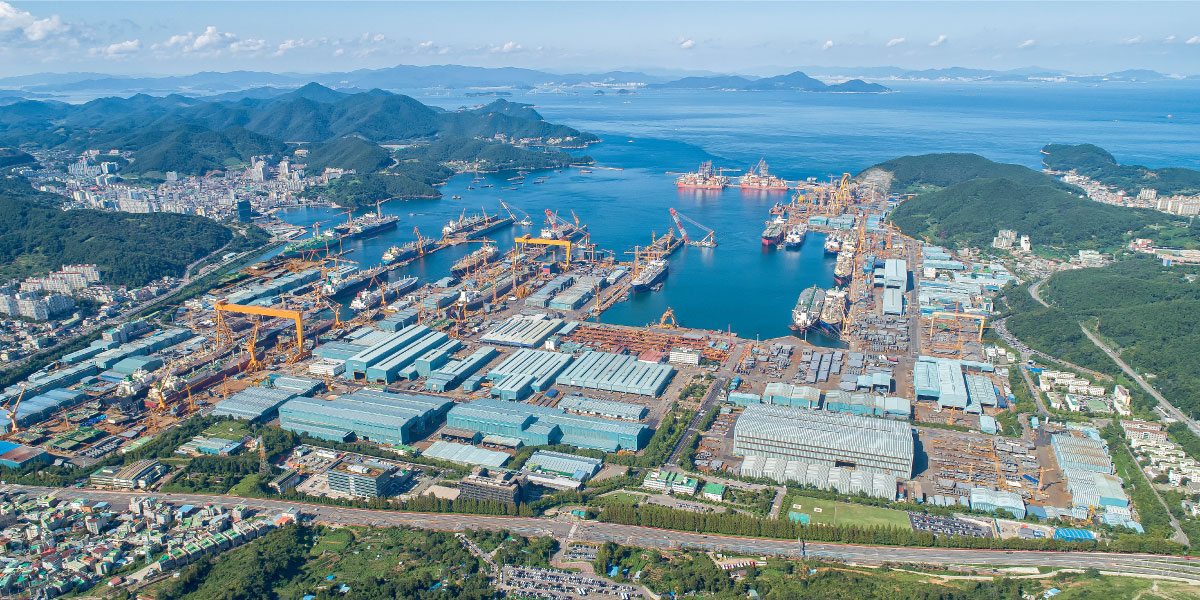
Hanwha Ocean’s Geoje shipyard
Charting an Earth-conscious Course
Globalization has created oceans of opportunity for expanded channels of communication and trade, leading to a robust outlook for the maritime industry. However, the importance of adopting green shipping solutions and a blue economy cannot be overstated if we are to achieve sustainable growth in this sector. With the ocean playing a vital role in the health of our communities, economies, and planet, it is crucial that we embrace practices that minimize harmful impacts on this precious resource while making forward progress in the energy transition.
To achieve our global emissions targets and ensure a brighter future for generations to come, it is imperative that we continue to invest in technologies, innovations, and infrastructure that support positive, sustainable change. Hanwha Ocean is guided by this vision. As the world continues its focus on sustainability, Hanwha Ocean will be at the forefront of pioneering advanced marine solutions, leveraging its green energy ecosystem and know-how to expand the green energy value chain. By championing net-zero initiatives, we can chart a new course towards cleaner, healthier, and more prosperous tomorrows for our oceans, our society, and our world.
Get the latest news about Hanwha, right in your inbox.
Fields marked with * are mandatory.
- Non-employee
- Employee



